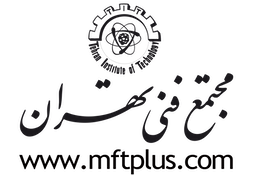| Advance Layer 3 Technologies: |
- Troubleshoot administrative distance (all routing protocols)
- Troubleshoot route map for any routing protocol (attributes, tagging, filtering)
- Troubleshoot loop prevention mechanisms (filtering, tagging, split horizon, route poisoning)
- Troubleshoot redistribution between any routing protocols or routing sources
- Troubleshoot manual and auto-summarization with any routing protocol
- Configure and verify policy-based routing
- Configure and verify VRF-Lite
- Describe Bidirectional Forwarding Detection
- Troubleshoot EIGRP (classic and named mode)
- Troubleshoot OSPF (v2/v3)
- Troubleshoot BGP (Internal and External)
|
- Address families (IPv4, IPv6)
- Neighbor relationship and authentication
- Loop-free path selections (RD, FD, FC, successor, feasible successor, stuck in active)
- Stubs
- Load balancing (equal and unequal cost)
- Metrics
- Address families (IPv4, IPv6)
- Neighbor relationship and authentication
- Network types, area types, and router types
- Point-to-point, multipoint, broadcast, nonbroadcast
- Area type: backbone, normal, transit, stub, NSSA, totally stub
- Internal router, backbone router, ABR, ASBR
- Virtual link
- Path preference
- Address families (IPv4, IPv6)
- Neighbor relationship and authentication (next-hop, mulithop, 4-byte AS, private AS, route refresh, synchronization, operation, peer group, states and timers)
- Path preference (attributes and best-path)
- Route reflector (excluding multiple route reflectors, confederations, dynamic peer)
- Policies (inbound/outbound filtering, path manipulation)
|
| VPN Technologies: |
- Describe MPLS operations (LSR, LDP, label switching, LSP)
- Describe MPLS Layer 3 VPN
- Configure and verify DMVPN (single hub)
|
- GRE/mGRE
- NHRP
- IPsec
- Dynamic neighbor
- Spoke-to-spoke
|
| Infrastructure Security: |
- Troubleshoot device security using IOS AAA (TACACS+, RADIUS, local database)
- Troubleshoot router security features
- Troubleshoot control plane policing (CoPP) (Telnet, SSH, HTTP(S), SNMP, EIGRP, OSPF, BGP)
- Describe IPv6 First Hop security features (RA guard, DHCP guard, binding table, ND inspection/snooping, source guard)
|
- IPv4 access control lists (standard, extended, time-based)
- IPv6 traffic filter
- Unicast reverse path forwarding (uRPF)
|
| Infrastructure Services: |
- Troubleshoot device management
- Troubleshoot SNMP (v2c, v3)
- Troubleshoot network problems using logging (local, syslog, debugs, conditional debugs, timestamps)
- Troubleshoot IPv4 and IPv6 DHCP (DHCP client, IOS DHCP server, DHCP relay, DHCP options)
- Troubleshoot network performance issues using IP SLA (jitter, tracking objects, delay, connectivity)
- Troubleshoot NetFlow (v5, v9, flexible NetFlow)
- Troubleshoot network problems using Cisco DNA Center assurance (connectivity, monitoring, device health, network health)
|
- Console and VTY
- Telnet, HTTP, HTTPS, SSH, SCP
- (T)FTP
|








